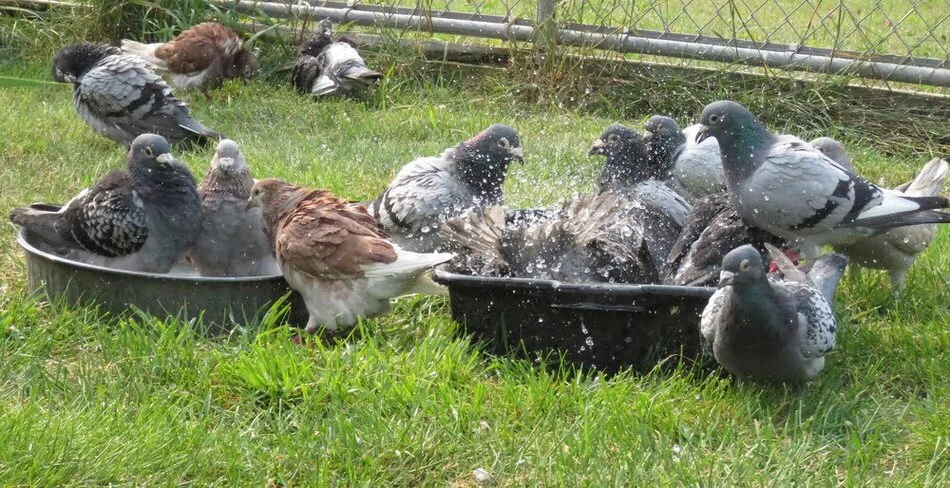
Share:
Bathing your birds is a vital part of raising and caring for pigeons. It’s essential to their overall health. Birds and other animals are really no different than humans when it comes to cleanliness. Everyone likes to be clean. Use a tin pan, or you could use a plastic tub of some sort, but be sure to wash it out after to prevent bacteria growth. Fill it with roughly 2-3 inches of water. Pigeons really like taking baths and will try to bathe in their water dish or a water puddle of some sort if you don’t give them bath water.
Birds in general dislike dirty feet and dirty or dusty feathers. As I mentioned above, all animals, to some degree, like how they feel when they get the itchy dander, loose hair, and stinky odor off of themselves. Funny story, I have 4 large Labrador hunting dogs, and when I ask if any of them want a bath or tubby, let me tell you, they head straight down to the tub. If I don’t ask soon enough, then I get the message loud and clear when I see them pulling all their blankets off their beds and flipping their pillows around. I guess the Downey smell faded. LoL… They know I bathe them every week and wash their bedding. Speaking of bathing, who says cats don’t like water? When I get out of the shower, my cats will jump in and wash themselves in the wet tub. So, it only seems natural that the birds should want to bathe just as often.
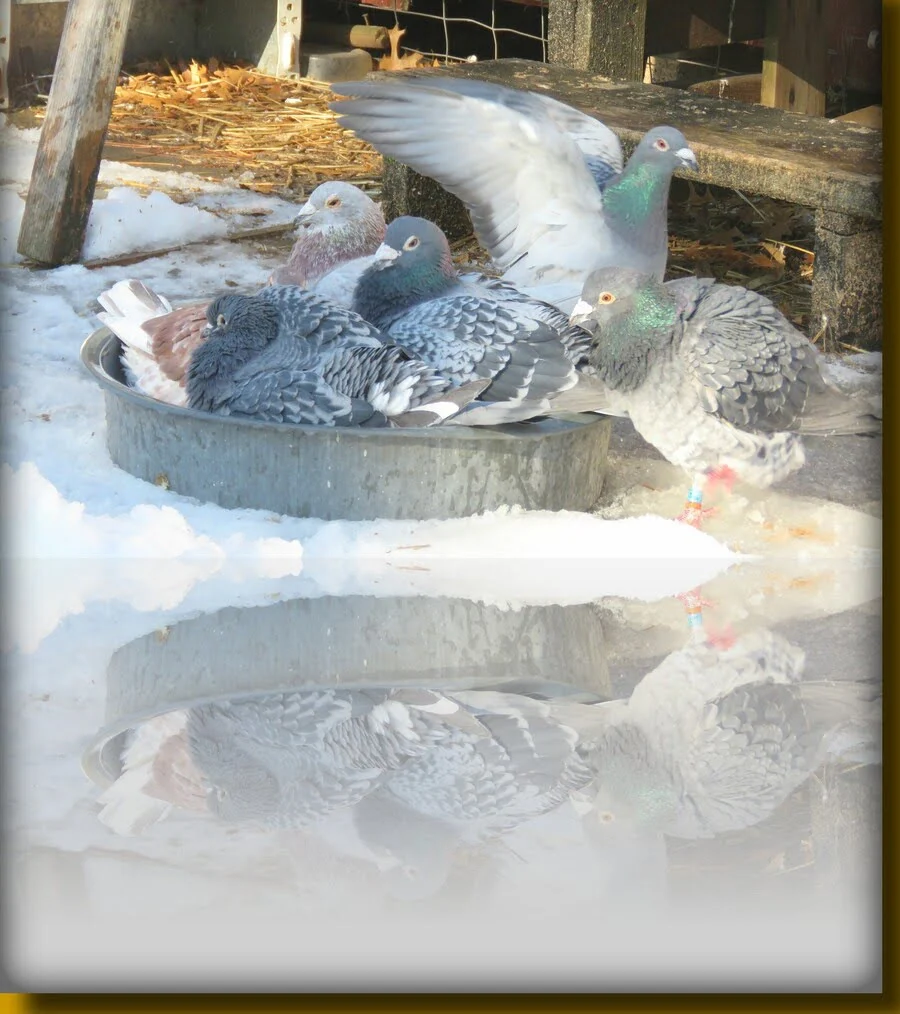
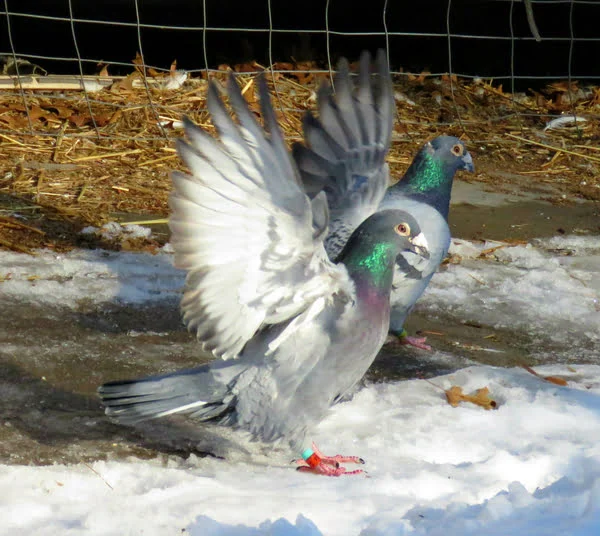
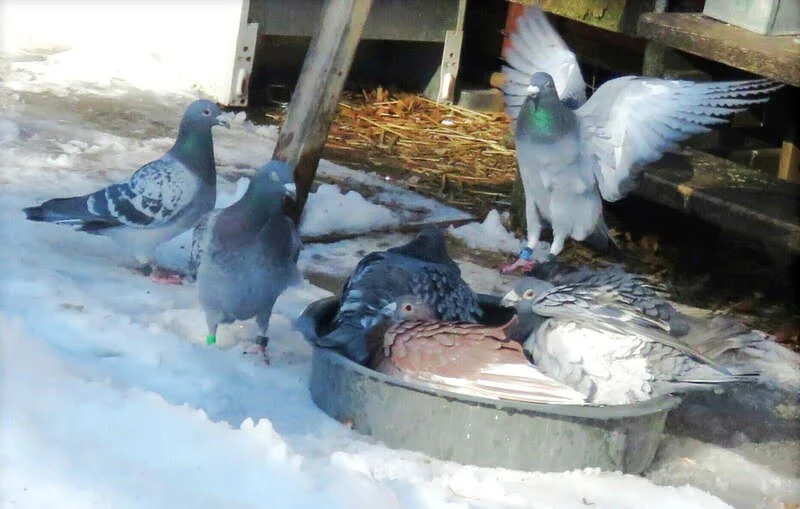
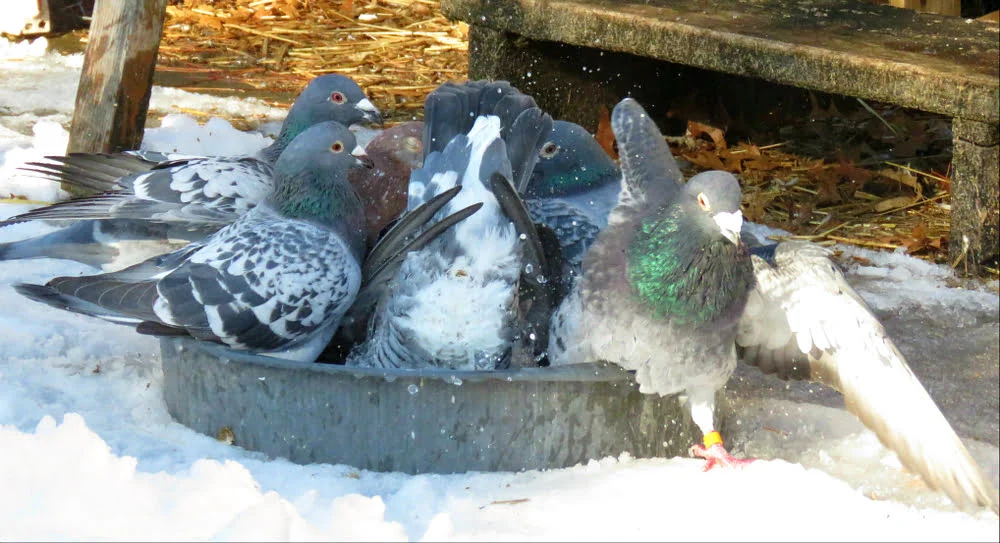
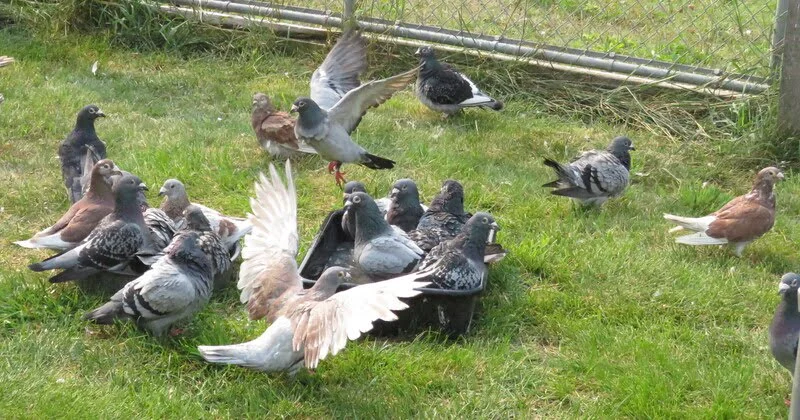
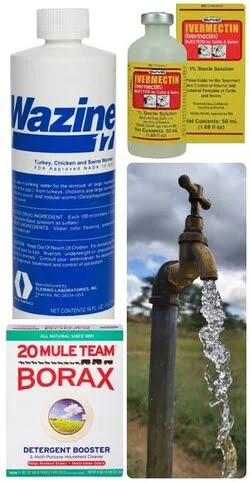
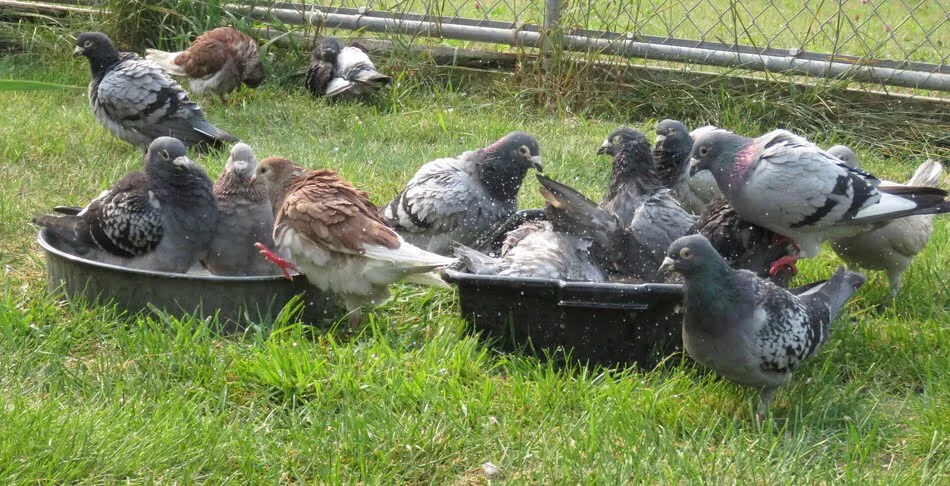
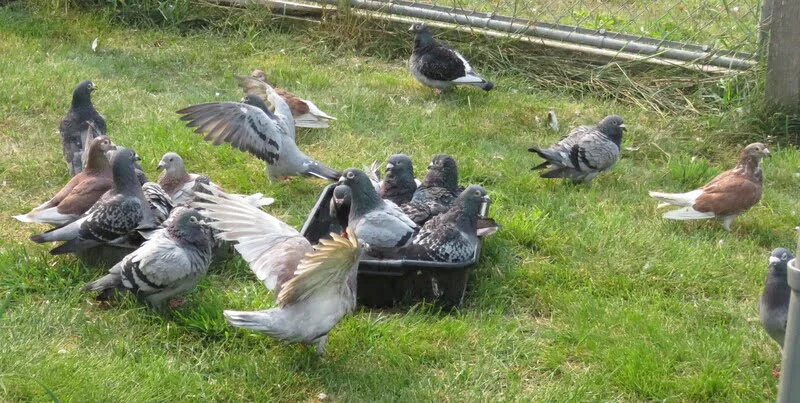
If you are keeping a close eye on your pigeons, giving them clean, fresh drinking water and nutritious food, bathing them regularly, and having a strict regimen for keeping the coops and lofts clean, then your birds should stay just as strong and healthy as ours. That’s all for now; drop us a line if you have any questions.

I’ve been around pigeons my entire life. My dad learned from the old timers in Germany as a kid and won his first homing pigeon race at the age of 15. He immigrated to USA at age 20. He introduced me to all the workings of his loft when I was just 6 yrs old. I’ve been hooked ever since. Pigeons are a part of my identity.
We wrote many blog articles posted on our other pigeon website. Instead of us duplicating blog posts here, just click the button below to read them. They are informative, entertaining and should address any questions you might have. [If not just ask via message, email or phone.]
If you want golden nugget Quick-Tips right at your fingertips then be sure to click the button below to again, be taken to our other pigeon website. There you will find a wealth of knowledge obtain from a lifetime of raising pigeons in bit size pieces.
© 2025 4-Way Loft | All Rights Reserved | Chubberton LLC